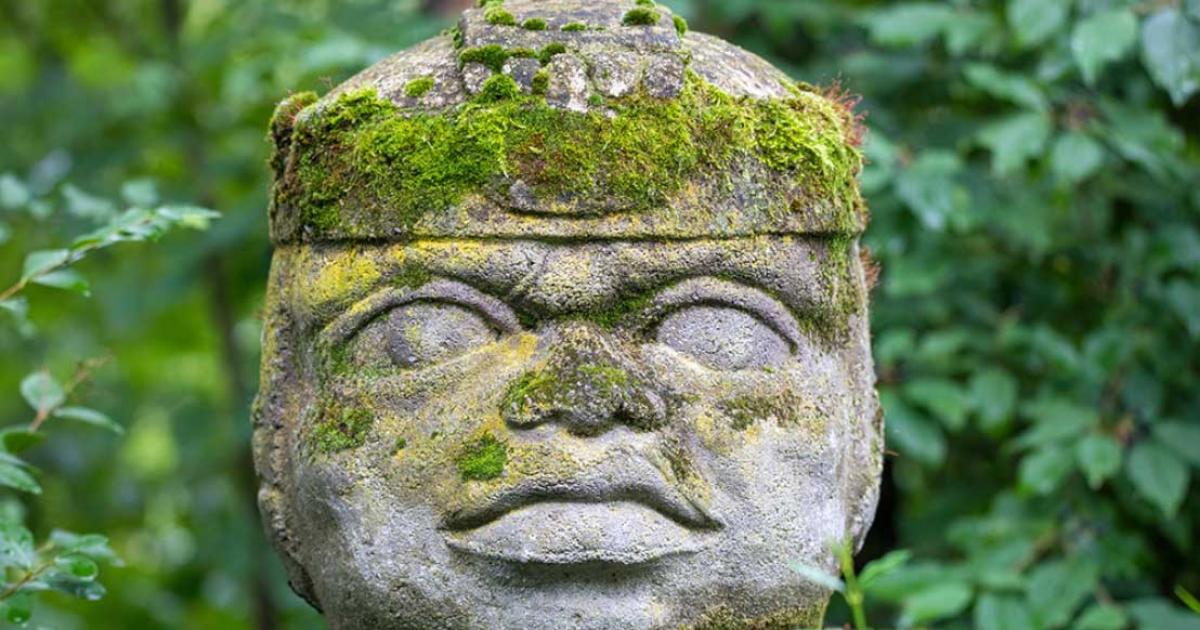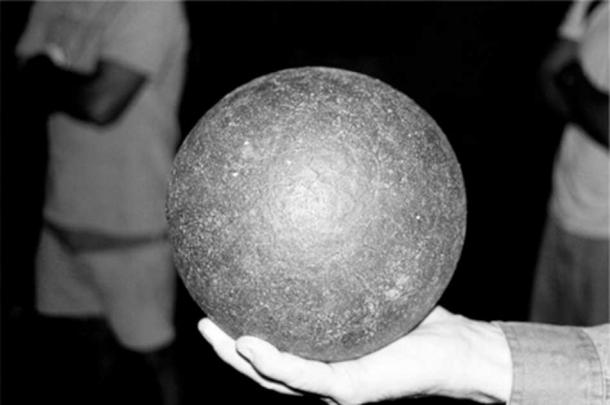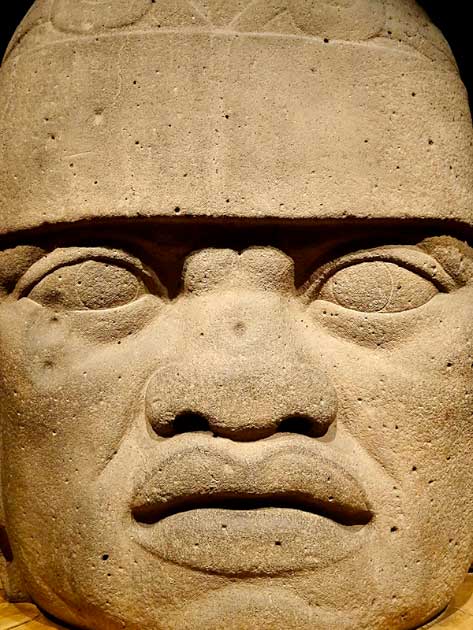
The Ancient Rubber People of Mesoamerica
Ancient civilizations in Mexico and Central America were making rubber decades before Michelin ever entered into business. For the Aztecs, Maya, and Olmecs, rubber production was a central part of their civilizations. In fact, the name of the Olmecs, who were the earliest known Mesoamerican civilization, literally means “rubber people” and is a term given to them by the Aztecs.
These Olmec rubber people dominated Mesoamerica between 1200 and 400 BC, and their influence lived on through the Aztecs and the Maya, and yet they were completely unknown to historians up until the mid-nineteenth century. So how did they make rubber and just how influential were they?

The Castilla elastica, or Panama rubber tree, is native to Mexico and Central America. It was the main source of latex and was used by the Olmecs and other Mesoamerican peoples to make rubber by mixing it with the juice of morning glory vines. (RupendraSingh / Adobe Stock)
How Did the Olmecs Make Rubber?
The Olmecs lived in the hot, humid lowlands along the Gulf of Mexico, in what were harsh conditions. In order to make rubber, they extracted latex from Panama rubber trees, the Castilla elastica, and mixed it with the juice from morning glory vines that made the solidified latex less brittle. Morning glory plants tend to grow in close proximity to rubber trees and both plants were considered sacred in Mesoamerican cultures. Morning glory plants in particular were likely held sacred because they were used for their hallucinogenic properties in religious ceremonies.
- What Makes the Olmec Culture So Unique and Alluring?
- The Olmecs: Mesoamerican Mother Culture of Colossal Heads and Giant Mysteries
A team of researchers from the Massachusetts Institute of Technology found that by changing the proportions of the two ingredients, you could get rubber products with different properties. It has even been suggested that some of the bouncier rubber may have been used to make balls for the legendary Mesoamerican ball games. These ball games often had religious meanings, pitting good versus evil, and often ended with a human sacrifice, usually by decapitation.
A softer, more durable rubber may have been used to create the rubber sandals the Aztecs wore. These rubber sandals were described by conquistadors who arrived in the 16th century, but have never been found in excavations. A 50-50 blend created maximum bounciness while a 75-25 mix of latex and morning glory created the most durable rubber.

Ballgames were played by the pre-Colombian people of ancient Mesoamerica, including the Olmecs. This illustration was drawn by Christoph Weiditz in 1528, when Aztec players performed for Charles V in Spain. (Public domain)

A rubber ball made with the traditional techniques used by pre-Columbian people. (Manuel Aguilar-Moreno / CC BY-NC-ND 4.0)
Who Were the Rubber People?
The Olmecs were actually named after rubber. The word for natural rubber, ōlli, was joined together with the word for people, mēcatl, to create Ōlmēcatl, the Nahuatl word for the Olmecs, the rubber people. The earliest evidence of the Olmec art style dates back to around 1200 BC in San Lorenzo, Mexico, their oldest known building site. The site contains many incredible stone monuments, including 17 huge stone heads of up to 3.4 meters in height (11.15 ft). The heads were carved out of basalt, and they have flat faces and are wearing helmet-like headgear.
It has been thought that these heads are portraits of important Olmec rulers, since each figure, although similar in look, is wearing a different headdress. Further backing this theory is the fact that the huge stones were brought from the Sierra de los Tuxtlas mountains in Veracruz. This means they were transported over a great distance which would have required great effort and resources only a ruler could afford.
In the village of Cascajal, close to San Lorenzo, a stone slab was found containing symbols that appear to be the Olmec writing system. The system is known as epi-Olmec or Isthmian. The stones date to around 900 BC and are the oldest known example of writing from the Americas. Other objects have been found containing glyphs from the Olmec language include the Tuxtla statuette, the Chiapa de Corzo shard, the O’Boyle mask, and La Mojarra stela (a carved monument).
Other artifacts have been found from Olmec civilization that can help paint a picture of their lives include ceramic figurines that are realistic. They depict a very short and stocky people with broad faces and round heads. Researchers believe their skin tones to be similar to today’s Native Americans.
The Olmecs lived in many different types of settlements, some of up to 7,000 people, some merely small villages. The bigger settlements were rare and were mostly used for ceremonial purposes or elite activity. The site at San Lorenzo is an example of one of these settlements. Most people lived in small villages. Olmec homes often featured a lean-to and a storage pit for vegetables nearby as well as gardens for growing medicinal herbs and small crops.
Most of the people were farmers who grew crops of maize, beans, squash and sunflower seeds. They hunted deer and ate dog, like most ancient people, and they ate various forms of seafood as well, giving them a varied diet. Alongside the farmers lived a minority of religious leaders, merchants and rulers.
Amongst the Olmecs there was no warrior class, likely because when warfare was carried out it involved everybody. These people lived more comfortable lives than farmers and could afford luxuries such as jade jewellery and elaborate costumes. What is certain is that their society was complex and non-egalitarian.

An Olmec colossal stone head discovered in San Lorenzo. Experts believe that these stone heads are portraits of important Olmec rulers. (Bruno Rijsman / CC BY-SA 2.0)
A Predecessor to Maya and Aztec Culture?
Although researchers have unearthed a great deal about the Olmecs, much remains unknown. There is a lot of debate today about whether the Olmecs were the mother of all subsequent Mesoamerican societies such as the Aztecs and the Maya, or whether Aztec, Maya and Olmec societies simply blended together, leading to the disappearance of the Olmec-style influence in artifacts around 400 BC.
- Olmecs, Ancient American Civilization with African Characteristics
- Aerial Survey Reveals Hundreds of Olmec and Maya Sites in Mexico
Dr. Richard Diehl, an expert on Olmec culture, believes that the “mother culture” theory is closer to the truth. Diehl states that at the very least “it’s pretty evident the Olmecs had a much greater influence on their neighbors than their neighbors did on them.” They definitely developed a wide trading network, with their cultural influence spreading northwest of the Valley of Mexico to the southeastward parts of Central America between 1100 and 800 BC.
This is evidenced by the presence of artifacts such as jade from Oaxaca in Mexico and Guatemala, and obsidian from the Mexican highlands to their north. Regardless of which theory is true, the rubber people certainly had a major impact on Mesoamerican culture right up to this day.
Top image: Replica of a sculpture made by the Olmecs, the ancient rubber people of Mesoamerica. Source: Stoica / Adobe Stock
By Mark Brophy
References
Bryant, C. 9 October 2005. “‘Rubber People’: The Americas First Civilization” in The University of Alabama. Available at: https://news.ua.edu/2005/10/rubber-people-the-americas-first-civilization/
Kaufman, R. 30 June 2010. “Aztec, Maya Were Rubber-Making Masters?” in National Geographic. Available at: https://www.nationalgeographic.com/science/article/100628-science-ancient-maya-aztec-rubber-balls-beheaded
Khan Academy. No date. “The Olmec” in Khan Academy. Available at: https://www.khanacademy.org/humanities/world-history/world-history-beginnings/ancient-americas/a/the-olmec-article
The Editors of Encyclopaedia Britannica. 4 May 1999. “Olmec” in Britannica. Available at: https://www.britannica.com/topic/Olmec















